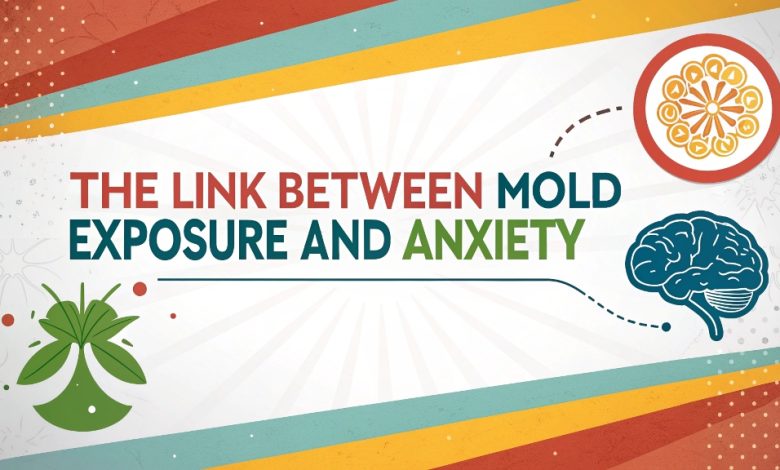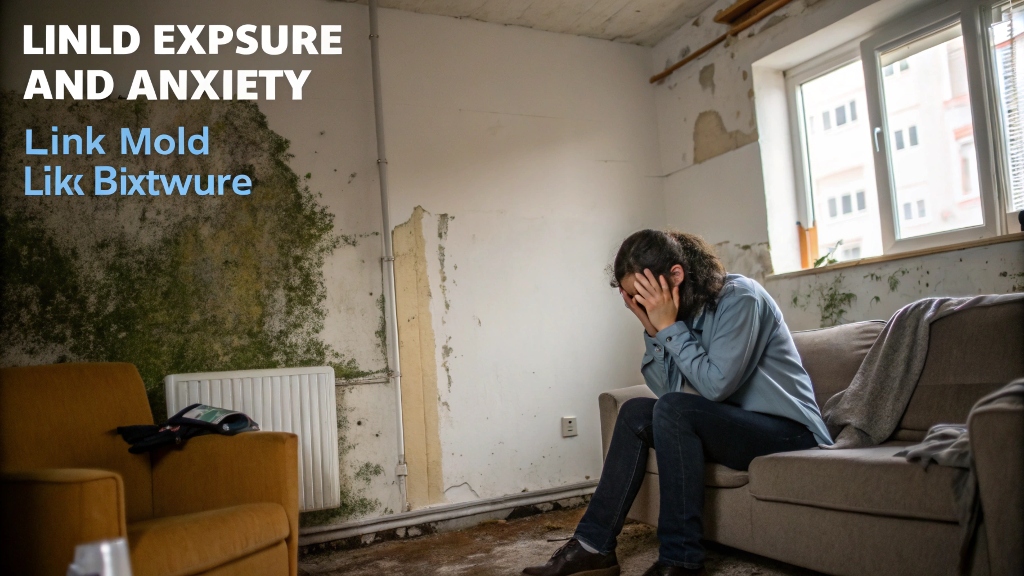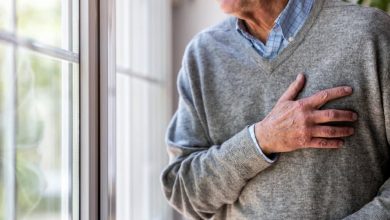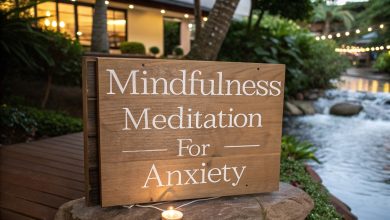The Unseen Agitator: Unraveling the Link Between Mold Exposure and Anxiety

The creeping dread, the racing heart, the persistent worry – anxiety can feel like an invisible weight. While its triggers are often attributed to stress, trauma, or biochemical imbalances, a growing body of evidence suggests a more insidious culprit could be lurking in our homes, workplaces, and schools: mold. The question, “Does mold exposure cause anxiety?” is no longer a fringe inquiry but a significant area of concern for both individuals experiencing unexplained mental health shifts and the scientific community. This article delves into the latest understanding of this complex relationship, exploring the mechanisms, symptoms, and pathways to recovery.
For decades, the health impacts of mold exposure have primarily focused on respiratory issues – allergies, asthma, and other breathing difficulties. However, the invisible spores and the toxic compounds they can produce, known as mycotoxins, have a reach that extends far beyond the lungs. Increasing research and countless anecdotal reports paint a concerning picture of mold’s potential to disrupt neurological function and contribute to a spectrum of psychological symptoms, with anxiety being a prominent feature. Understanding this connection is crucial for accurate diagnosis and effective treatment, offering hope to those whose anxiety may have an environmental root.

Beyond the Musty Odor: How Mold Infiltrates Mind and Mood
The link between inhaling mold spores or absorbing mycotoxins and the onset of anxiety is not a simple cause-and-effect but rather a multifaceted process involving the body’s immune and nervous systems. When mold colonizes damp indoor environments, it releases these microscopic spores and, in some cases, potent mycotoxins. These substances can enter the body through inhalation, ingestion (via contaminated food), or even skin contact. Once inside, they can trigger a cascade of physiological responses that may culminate in anxiety and other mental health disturbances.
One of the primary mechanisms believed to be at play is neuroinflammation. Mycotoxins are known neurotoxic agents, meaning they can damage nerve cells and disrupt the delicate chemical balance within the brain. The body’s immune system, recognizing these toxins as foreign invaders, mounts an inflammatory response. While inflammation is a natural defense mechanism, chronic inflammation, particularly in the brain, can interfere with neurotransmitter production and signaling pathways crucial for mood regulation. Key neurotransmitters like serotonin (often linked to feelings of well-being), dopamine (associated with pleasure and motivation), and GABA (which has calming effects) can be adversely affected. An imbalance in these chemicals is a well-established factor in the development of anxiety disorders. For instance, some studies suggest that certain mycotoxins can increase glutamate levels, an excitatory neurotransmitter, while decreasing GABA, leading to a state of heightened agitation and anxiety.
Furthermore, mold exposure can trigger or exacerbate oxidative stress, a condition where there’s an imbalance between free radicals (unstable molecules that can damage cells) and antioxidants (which neutralize them). The brain, with its high oxygen consumption and lipid-rich content, is particularly vulnerable to oxidative damage. This cellular stress can impair neuronal function and contribute to the neurological and psychological symptoms observed in mold-exposed individuals, including anxiety, brain fog, and concentration difficulties. The constant activation of the immune system can also lead to a state of chronic physiological stress, which itself is a significant contributor to anxiety. This creates a vicious cycle where mold exposure causes stress, and stress potentially weakens the body’s ability to cope with the toxic exposure.
Recognizing the Warning Signs: When Mold-Induced Anxiety Mimics Other Conditions
Identifying mold-related anxiety can be challenging because its symptoms often overlap with anxiety stemming from other causes. However, certain patterns and accompanying physical symptoms may offer clues. Individuals suffering from mold-induced anxiety might experience a new onset of anxiety or a sudden worsening of pre-existing anxiety symptoms that coincide with moving into a new home, starting a job in a different building, or following a water damage event (like a flood or leak) in their current environment.
Common psychological symptoms linked to mold exposure include:
- Generalized anxiety: Persistent and excessive worry that is difficult to control.
- Panic attacks: Sudden episodes of intense fear accompanied by physical symptoms like heart palpitations, shortness of breath, and dizziness.
- Irritability and mood swings: Uncharacteristic emotional volatility.
- Brain fog and difficulty concentrating: A feeling of mental cloudiness and an inability to focus.
- Depression or feelings of hopelessness: Often co-occurring with anxiety.
- Derealization or depersonalization: A sense that one’s surroundings or oneself are unreal.
What often distinguishes mold-related anxiety is its frequent association with a cluster of unexplained physical symptoms. These can vary widely but often include:
- Chronic fatigue and weakness: Persistent tiredness not alleviated by rest.
- Headaches and migraines: Frequent or unusual headaches.
- Respiratory issues: Persistent cough, wheezing, sinusitis, or allergy-like symptoms.
- Skin rashes or irritation: Unexplained itching or skin inflammation.
- Digestive problems: Nausea, abdominal pain, or changes in bowel habits.
- Muscle and joint pain: Aches and stiffness.
- Increased sensitivity to light, sound, or chemicals.
- Dizziness or balance issues.
The presence of these concurrent physical ailments, especially when they don’t respond to conventional treatments or when multiple members of a household experience similar issues, should raise a red flag for potential mold exposure. It’s also noteworthy that some individuals may have a genetic predisposition that makes them more susceptible to the adverse effects of mold and mycotoxins, leading to more severe symptoms, including anxiety, even at exposure levels that don’t noticeably affect others. This field of study, often referred to as Chronic Inflammatory Response Syndrome (CIRS), highlights how a dysfunctional immune response to biotoxins can lead to a wide array of debilitating symptoms.
The journey to an accurate diagnosis can be frustrating. Standard medical evaluations for anxiety may not consider environmental factors like mold. Therefore, it’s crucial for individuals experiencing these combined symptoms to advocate for themselves and seek healthcare practitioners knowledgeable about mold-related illnesses. This may involve specialized testing for mycotoxins in the body or environmental testing of the home or workplace to identify mold presence and types.
The path to recovery from mold-induced anxiety involves a two-pronged approach: eliminating the exposure and supporting the body’s healing processes. Removing oneself from the mold-contaminated environment is paramount. This often requires professional mold remediation in the affected building or, in severe cases, relocation. Once the source of exposure is addressed, various medical and supportive therapies can help alleviate anxiety and other symptoms. These may include detoxification protocols to help the body eliminate mycotoxins, nutritional support to reduce inflammation and replete depleted nutrients, and treatments to rebalance neurotransmitter function. Standard anxiety therapies, such as cognitive-behavioral therapy (CBT) and mindfulness techniques, can also be beneficial in managing the psychological distress, even when the root cause is environmental.
The growing awareness of the mold-anxiety link underscores the profound impact our environment can have on our mental well-being. It emphasizes the need for healthier indoor spaces and a more holistic approach to mental healthcare that considers all potential contributing factors. While the science is still evolving, the message is clear: for those struggling with unexplained anxiety, investigating the possibility of mold exposure could be a critical step towards reclaiming their health and peace of mind.
People Also Ask (FAQs)
Q1: Can mold exposure definitely cause anxiety?
A: While a direct causal link is still being extensively researched, a growing body of scientific evidence and clinical observations strongly suggests that exposure to mold, particularly toxigenic molds that produce mycotoxins, can contribute to the development or exacerbation of anxiety symptoms in susceptible individuals. The mechanisms are thought to involve neuroinflammation, oxidative stress, and disruption of neurotransmitter balance.
Q2: What types of mold are most likely to cause anxiety?
A: It’s less about specific “anxiety-causing” mold types and more about molds that produce mycotoxins, which are the toxic compounds believed to impact neurological and psychological health. Common indoor molds like Stachybotrys chartarum (often called “black mold”), various species of Aspergillus, Penicillium, and Chaetomium are known mycotoxin producers and have been implicated in health issues, including neurological symptoms.
Q3: How is anxiety caused by mold exposure diagnosed?
A: Diagnosis can be complex and often involves a multi-step process. It typically includes a detailed medical history (noting the onset of anxiety in relation to environmental changes), a thorough symptom assessment (including both psychological and physical symptoms), and ruling out other potential causes of anxiety. Specialized tests may include urine mycotoxin tests to detect the presence of mold toxins in the body and environmental testing (air samples, surface swabs, ERMI testing) of the home or workplace to identify mold species and concentrations. Consultation with a healthcare provider experienced in mold-related illness is crucial.
Q4: What are the treatment options for anxiety related to mold exposure?
A: The primary and most critical step is to identify and eliminate the source of mold exposure through professional remediation or by leaving the contaminated environment. Medical treatment may involve detoxification protocols to help the body excrete mycotoxins (e.g., using binding agents like cholestyramine or activated charcoal under medical supervision), anti-inflammatory treatments, nutritional support, and therapies to restore neurotransmitter balance. Standard anxiety treatments like cognitive-behavioral therapy (CBT), medication (if deemed appropriate by a doctor), and stress-reduction techniques can also be helpful in managing symptoms.
Q5: How long does it take to recover from mold-induced anxiety after removing the exposure?
A: Recovery time varies significantly from person to person and depends on several factors, including the duration and severity of mold exposure, the individual’s overall health and genetic susceptibility, the specific mycotoxins involved, and the effectiveness of remediation and treatment. Some individuals may notice improvements within weeks of removing the exposure and starting treatment, while for others, particularly those with prolonged or severe exposure or conditions like CIRS, recovery can be a longer process, potentially taking months or even years. Consistent follow-up with healthcare providers is important.
Q6: Can cleaning mold myself resolve the anxiety symptoms?
A: While minor surface mold can sometimes be cleaned with appropriate precautions (wearing PPE like masks, gloves, and goggles), extensive mold growth (generally more than 10 square feet) or mold in HVAC systems should be handled by professional mold remediation services. Improper cleaning can disturb mold spores, potentially worsening exposure and symptoms, including anxiety. Furthermore, simply cleaning visible mold doesn’t address the underlying moisture problem that allowed it to grow, nor does it guarantee removal of all mycotoxins. Addressing the source of moisture and ensuring thorough removal is key.
Q7: Are there preventative measures to avoid mold exposure and related anxiety?
A: Yes, prevention is key. Maintain low indoor humidity levels (ideally between 30-50%). Ensure good ventilation, especially in bathrooms, kitchens, and laundry areas. Promptly fix any water leaks (roof, plumbing, windows). Clean and dry damp or wet areas within 24-48 hours to prevent mold growth. Use mold-resistant products in areas prone to moisture. Regularly inspect your home for signs of mold or moisture. Consider using high-quality air purifiers with HEPA filters. Being proactive about moisture control is the most effective way to prevent mold growth and its potential health consequences, including anxiety.
Read More Also: Unraveling the Muscle Mystery: Slow Twitch vs. Fast Twitch Fibers for Optimal Performance
Conclusion
The once-dismissed notion that mold in our living and working spaces could be a hidden trigger for anxiety is now gaining significant traction within both the scientific and medical communities. The evidence, while still evolving, points towards plausible biological pathways through which mold spores and their mycotoxins can incite neuroinflammation, oxidative stress, and neurotransmitter imbalances, collectively contributing to the onset or worsening of anxiety symptoms. This connection highlights the critical importance of considering environmental factors in the assessment and treatment of mental health conditions.
For individuals grappling with unexplained anxiety, particularly when accompanied by a constellation of persistent physical symptoms, exploring the possibility of mold exposure offers a potential avenue for understanding and relief. It underscores the need for a holistic approach to well-being, one that recognizes the intricate interplay between our environment and our mental state. While further research is necessary to fully elucidate the nuances of this relationship, the current understanding empowers individuals and healthcare providers to look beyond conventional explanations for anxiety and consider the unseen agitators in our midst. Addressing mold exposure is not just about cleaner buildings; it’s about fostering healthier minds and bodies, free from the insidious influence of environmental toxins.




